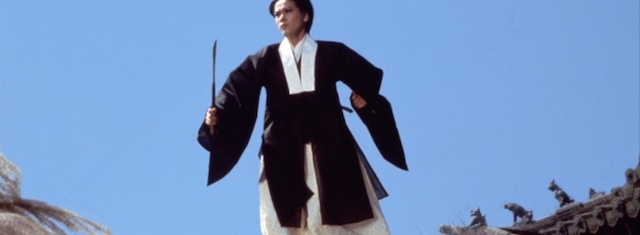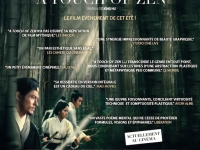Entertainment
A TOUCH OF ZEN MASTERPIECE OF KING HU COMES BACK ON PARISIAN CINEMA SCREENS
4K UNPRECEDENTED RESTORED VERSION

A Touch of Zen (Source: Courtesy Arte TV)
USPA NEWS -
A Touch of Zen is à 1971 Taiwanese wuxia film directed by King Hu is screened in Paris screens since yesterday in a restored 4K version.The film won a prize at the Cannes Film Festival, claiming the Technical Grand Prize award in 1975. It was nominated of the Palme D´Or.
BACKGROUND: Although filming began in 1968, A Touch of Zen was not completed until 1971. The original Taiwanese release was in two parts in 1970 and 1971 (filming was still ongoing when the first part was released) with the bamboo forest sequence that concludes Part 1 reprised at the beginning of Part 2; this version has a combined run time of 200 minutes. In November 1971 both parts of the film were combined into one for the Hong Kong market with a run time of 187 minutes. Its running time of over three hours makes it an unusually epic entry in the wuxia genre.
A Touch of Zen, now reissued in dining during a restore-transfer high-end digital.----------------------------------------------------
THE STORY :In China, during the Ming Dynasty. Gu Zai Sheng an old boy exercising literate painter and public writer, lives a quiet life with his mother, which seeks at all costs to marry his son. When a new neighbour comes to live in the house next door, the opportunity is unexpected. But this mysterious girl is none other than Yang Huizhen, whose father was assassinated by the political police of the great eunuch Wei who has been sought for treason ...-----------------------------------------------------
This new version brings a new vision of the film also upsetting that at the time and plunges the audience in the past; It has both historical and current perspective on China through the refined analysis of King HU. This film is a guaranteed fun and successful restoration of a timeless masterpiece.----------------
Liability for this article lies with the author, who also holds the copyright. Editorial content from USPA may be quoted on other websites as long as the quote comprises no more than 5% of the entire text, is marked as such and the source is named (via hyperlink).






